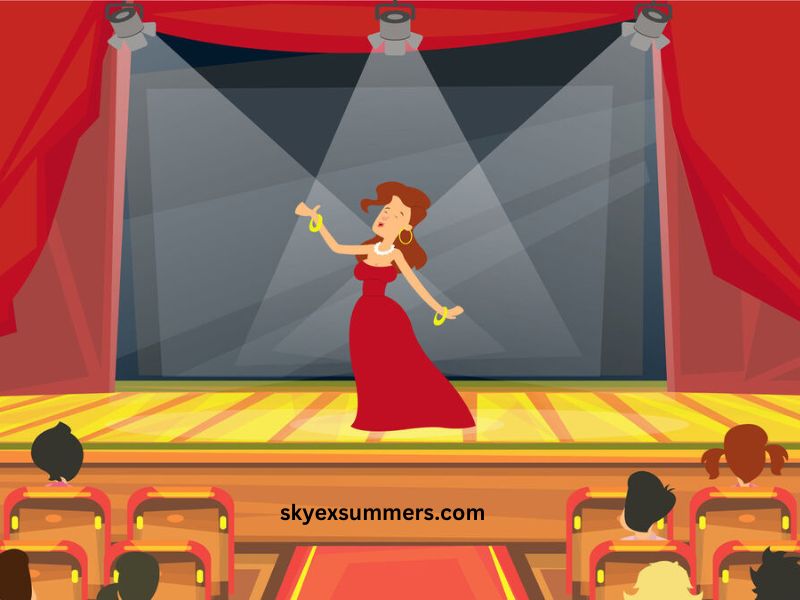A soliloquy is a powerful literary device that allows a character to express their innermost thoughts and feelings directly to the audience. Traditionally found in drama, particularly in the works of playwrights like William Shakespeare, the soliloquy serves as a window into a character’s psyche, revealing motivations, conflicts, and desires. This article explores the nature of soliloquies, their historical context, their role in storytelling, and their significance in character development.
Historical Context
The term “soliloquy” originates from the Latin words “solus,” meaning alone, and “loquor,” meaning to speak. In its classical roots, a soliloquy is a device used in theater where a character speaks their thoughts aloud while alone on stage or regardless of any hearers. The practice became particularly prominent during the Renaissance, with Shakespeare’s works often cited as quintessential examples. Famous soliloquies like Hamlet’s “To be or not to be” encapsulate complex philosophical dilemmas, blending deep introspection with existential themes.
The Purpose of a Soliloquy
Character Revelation
One of the primary purposes of a soliloquy is to provide insight into a character’s thoughts and motivations. Through this direct line of communication to the audience, characters can articulate their fears, hopes, and doubts. For instance, in Shakespeare’s “Hamlet,” the titular character’s soliloquies reveal his inner turmoil regarding life, death, and morality. Hamlet’s contemplations about revenge and existentialism provide the audience with a profound understanding of his character, which would be less effective if conveyed through dialogue with other characters.
Thematic Exploration
Soliloquies often serve as vehicles for exploring broader themes within a play. A character’s introspection can illuminate societal issues, moral dilemmas, or philosophical questions. In “Macbeth,” Macbeth’s soliloquies delve into themes of ambition, guilt, and fate. As he grapples with his desire for power and the ensuing consequences of his actions, the audience gains insight not only into his character but also into the play’s exploration of unchecked ambition and moral decay.
Pacing and Dramatic Tension
Soliloquies can also control the pacing of a narrative and heighten dramatic tension. By allowing characters to pause and reflect, playwrights can create suspense and anticipation. In “Romeo and Juliet,” Juliet’s soliloquies capture her youthful passion and despair, momentarily slowing the action and allowing the audience to savor the emotional stakes before the plot advances. This manipulation of time and tension enhances the overall dramatic effect.
Crafting a Soliloquy
Language and Structure
The effectiveness of a soliloquy lies in its language and structure. A well-crafted soliloquy utilizes poetic devices, such as metaphor, simile, and alliteration, to enrich the text. The rhythm and cadence of the speech can evoke a range of emotions, making the audience feel the weight of the character’s thoughts. For example, Shakespeare’s use of iambic pentameter gives his soliloquies a lyrical quality, enhancing their emotional resonance.
Authenticity and Voice
For a soliloquy to resonate with the audience, it must reflect the character’s unique voice and perspective. The language used should align with the character’s background, education, and emotional state. A character who is eloquent and sophisticated will employ different language and structure than a more straightforward, unrefined character. The authenticity of the soliloquy is crucial; it should feel like a genuine outpouring of thought rather than a contrived monologue.
Emotional Engagement
A successful soliloquy engages the audience on an emotional level. By revealing the character’s vulnerability and struggles, the audience can connect with their experience. This emotional engagement is pivotal in creating empathy, allowing the audience to understand and, in some cases, sympathize with characters who might otherwise appear flawed or villainous. For instance, in “Othello,” Iago’s soliloquies expose his motivations and manipulations, allowing the audience to grapple with their feelings toward him as an antagonist.
The Role of Soliloquy in Modern Literature and Film
While soliloquies are most commonly associated with classical theater, their influence extends into modern literature and film. Contemporary writers and filmmakers have adapted this device to suit various genres, allowing for rich character exploration and emotional depth.
Literary Soliloquies
In modern literature, soliloquies appear in various forms, such as stream-of-consciousness writing. James Joyce’s “Ulysses” and Virginia Woolf’s “Mrs. Dalloway” utilize this technique to convey characters’ thoughts in a fluid, introspective manner. These narratives often blur the line between soliloquy and narrative voice, allowing readers to immerse themselves in the characters’ inner worlds.
Cinematic Techniques
In film, soliloquies manifest through voiceovers, providing a direct link to a character’s thoughts. For example, in “Fight Club,” the protagonist’s voiceover serves as a modern soliloquy, conveying his internal struggles and philosophical musings. This technique allows filmmakers to explore complex themes while providing insight into characters’ motivations and conflicts.
Conclusion
The soliloquy remains a vital tool in storytelling, transcending its theatrical origins to find relevance in modern literature and film. By allowing characters to voice their thoughts, soliloquies facilitate deep emotional engagement and thematic exploration, providing audiences with a rich understanding of human complexity.
As a narrative device, the soliloquy not only enhances character development but also elevates the overall impact of the story. Through the lens of soliloquy, audiences are invited to reflect on their own thoughts and experiences, creating a powerful connection between the character and the viewer. In an increasingly complex world, the soliloquy serves as a reminder of the importance of introspection and the human experience, making it a timeless and essential element of storytelling.



